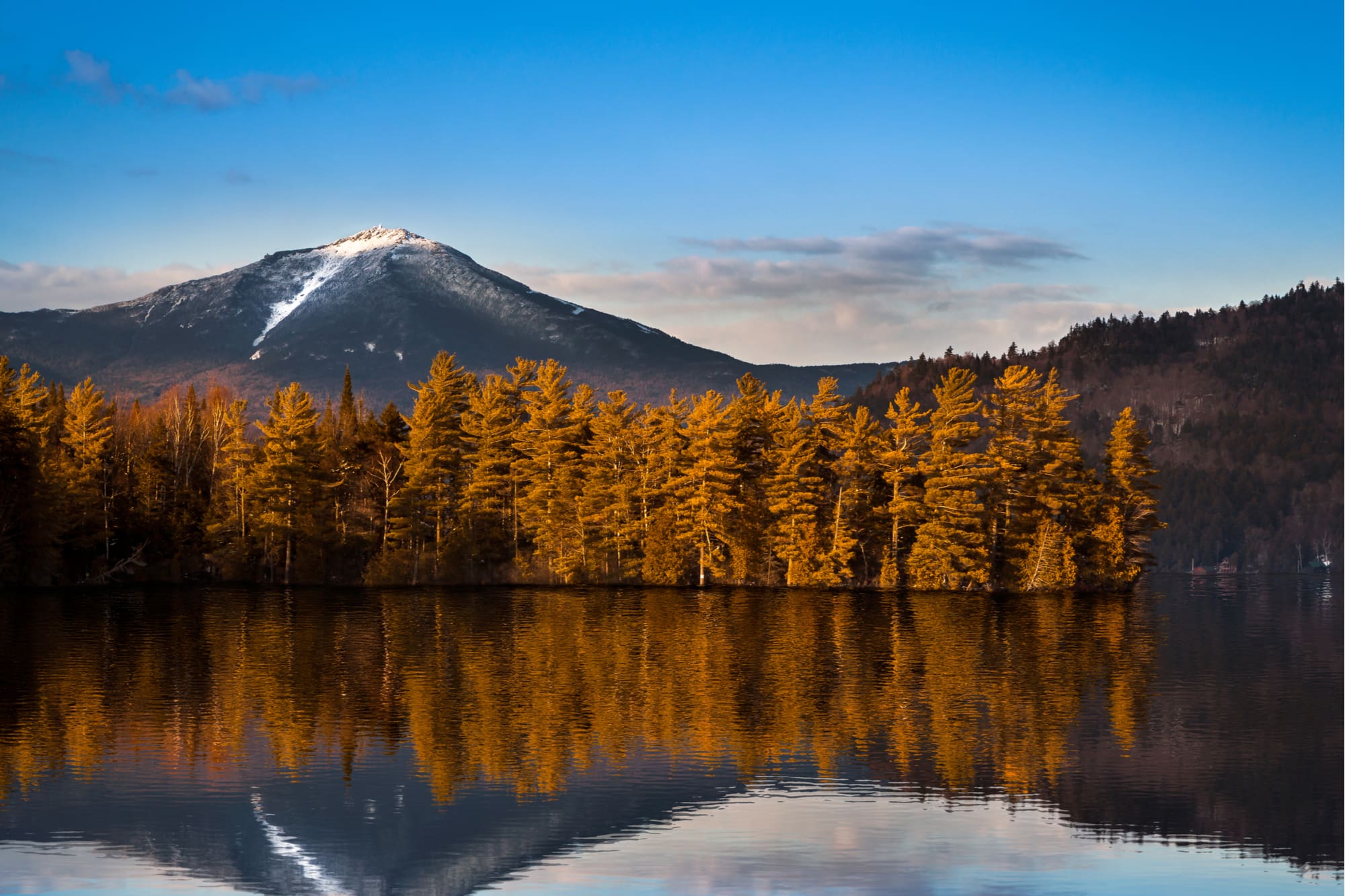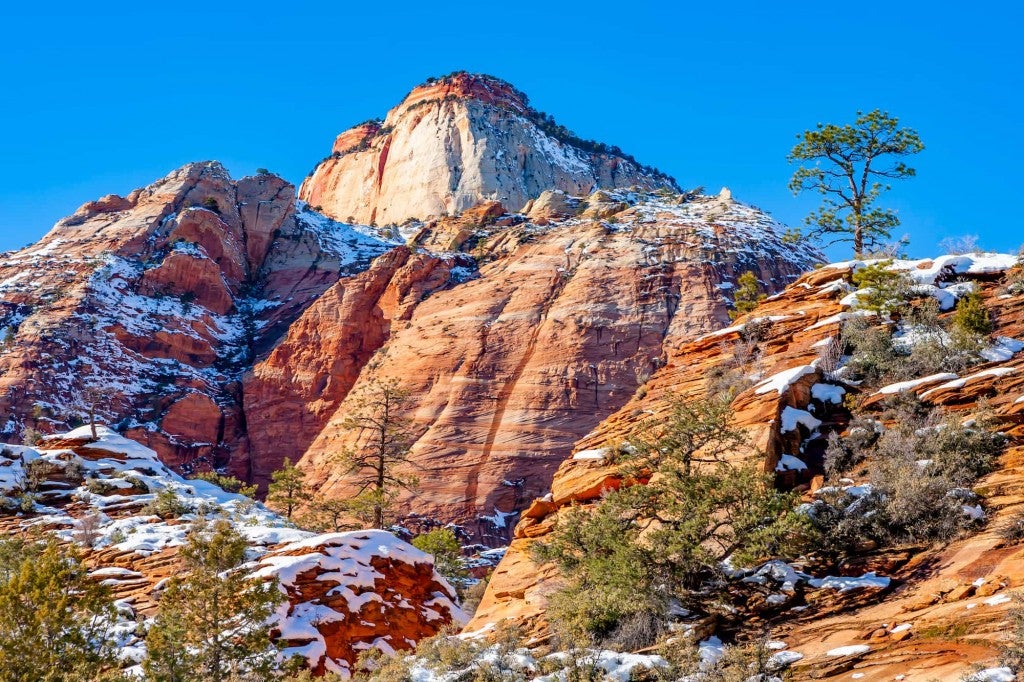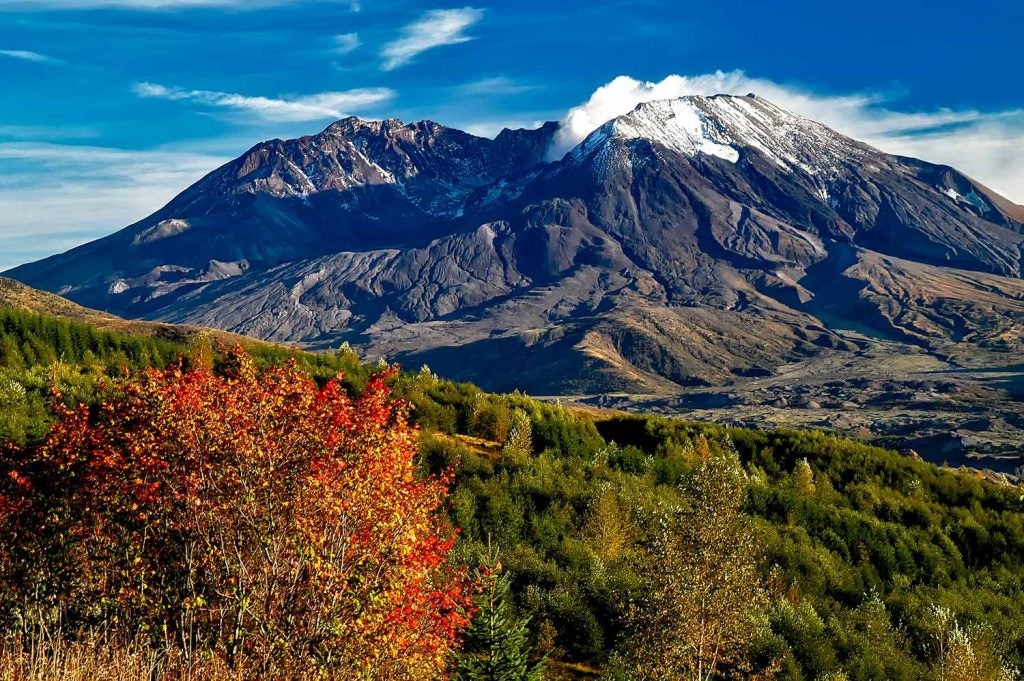There are many reasons people decide to go camping in the Adirondacks in winter. Some like the idea of less people or even no other people. Others enjoy the bug free environment of a winter wonderland. Some crave the soft quiet and beauty that befalls a landscape covered in snow. Most of those who enjoy winter camping, do so for all of those reasons. If you’re interested in finding out what winter camping is like read on for some insight and tips, then pack your bag and head for the snow covered outdoors.
7 Things to Know before Camping in the Adirondacks in Winter
1. It’ll be cold.
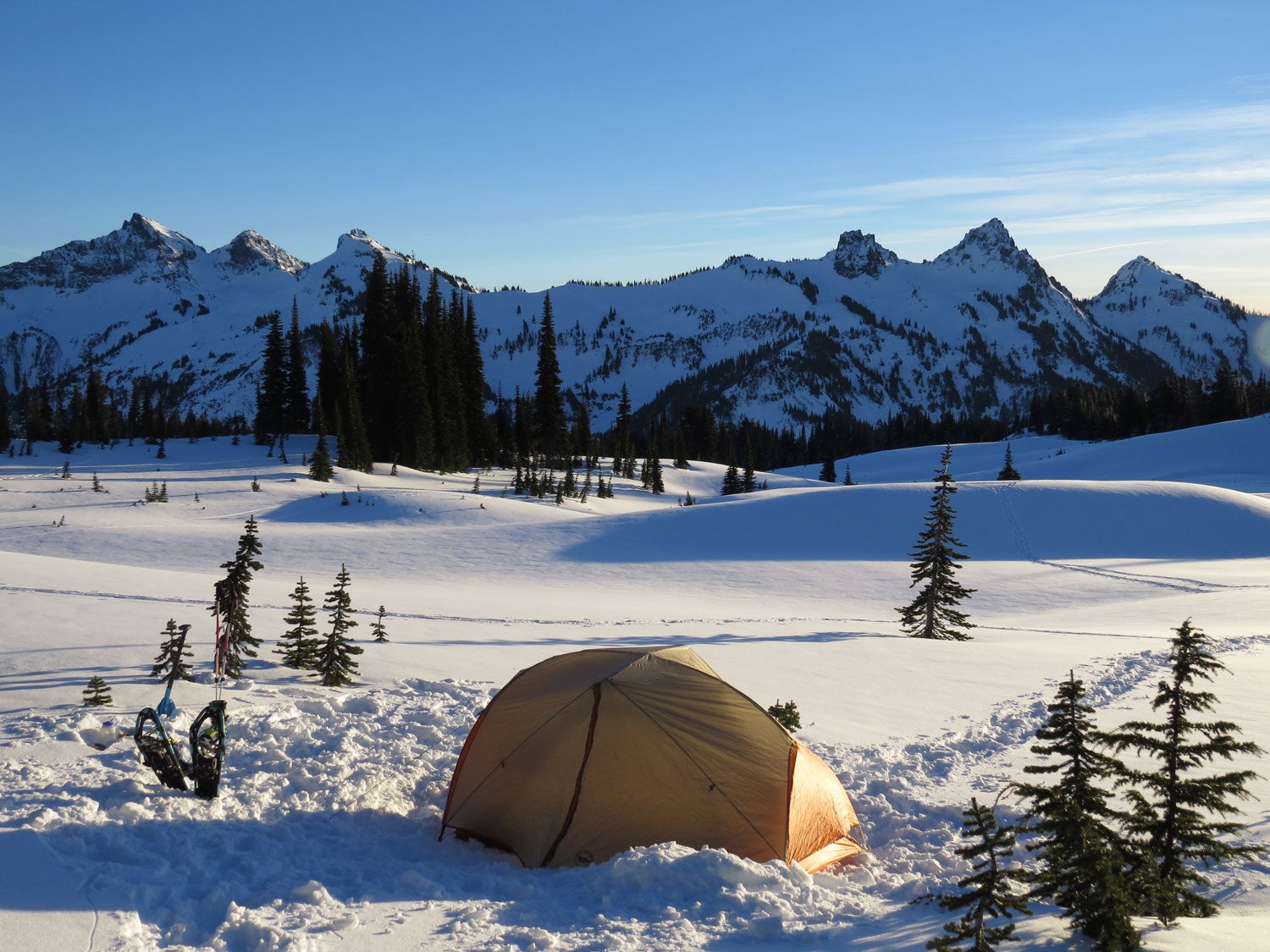
“Winter Camping is Fun!” by hikingqueen is licensed under CC BY 2.0
This may seem obvious but the Adirondacks in the winter means the possibility of very low temperatures. They could even get all the way down to thirty below zero (Fahrenheit).
Make sure you’re really prepared for this kind of cold. Sometimes, a good tactic is to go for a winter day trip first, one that includes at least one meal. Spend the day outside in the cold and see how you feel. If you have a backyard, you can also try out winter camping there before venturing into the wilderness. You’ll be able to find out if your sleeping bag really is warm enough.
Of course, if you live in NYC its likely that you don’t have a backyard. Since its illegal to camp in Central Park, check out some local hiking groups that may have winter camping outings. This way, you won’t be out in the cold alone.
2. Don’t go Camp Alone
Camping in the Adirondacks in winter is definitely one of those things you should use the buddy system for. There will be less people – or even no people – in parks and on the trails so, if something were to go wrong, you’d be completely on your own.
It’s also a good idea for you and/or your friend(s) to have some winter camping skills like; navigating in the snow, finding routes, and building shelters.
3. Take precautions against nature
Ice
Ice is one of those things that could easily turn a winter wonderland into a treacherous abyss if you don’t know the basic ice safety guidelines. Clear ice is always stronger than bubbly ice. Stay off any ice that has running water beneath it like a stream or a river.
Ice should be four or more inches thick to support the weight of a human. If you want to get super technical about how thick any iced surface may be, you can use a hand ice auger to drill through. Remember: not all ice freezes equally.
Avalanches
Avalanches aren’t incredibly common in the Adirondacks, but they do happen. One of the few known avalanche fatalities in the Adirondacks happened in 2001 on the bedrock slides on the southeastern slopes of Wright Peak.
A twenty seven year old experienced backcountry skier died during an avalanche when he ended up buried under the snow. All five of his companions were injured. Today the slopes are known as the Angel Slides.
The American Institute for Avalanche Research and Education (AIARE) provides courses, videos, and other instruction on avalanche safety. According to AIARE, the most common cause of avalanches are humans. If you’re going to be anywhere near an area where an avalanche could happen, consider carrying some basic equipment like an avalanche transceiver, a probe, and a shovel.
Avalanche transceivers can alert others to your location if you end up buried under snow. Transceivers do not prevent avalanches but rather, they reduce the time a person could be buried under one. Avalanche probes are collapsible rods in aluminum or carbon that are used to poke through fallen snow with the purpose of finding someone buried underneath it. An avalanche shovel is used to dig out the victim.
Bears!
An advantage of winter camping is that you don’t have to worry about bears. Bears, as most everyone knows, hibernate through the winter months, normally from around December 1st through the end of March.
4. Bring ample food and water
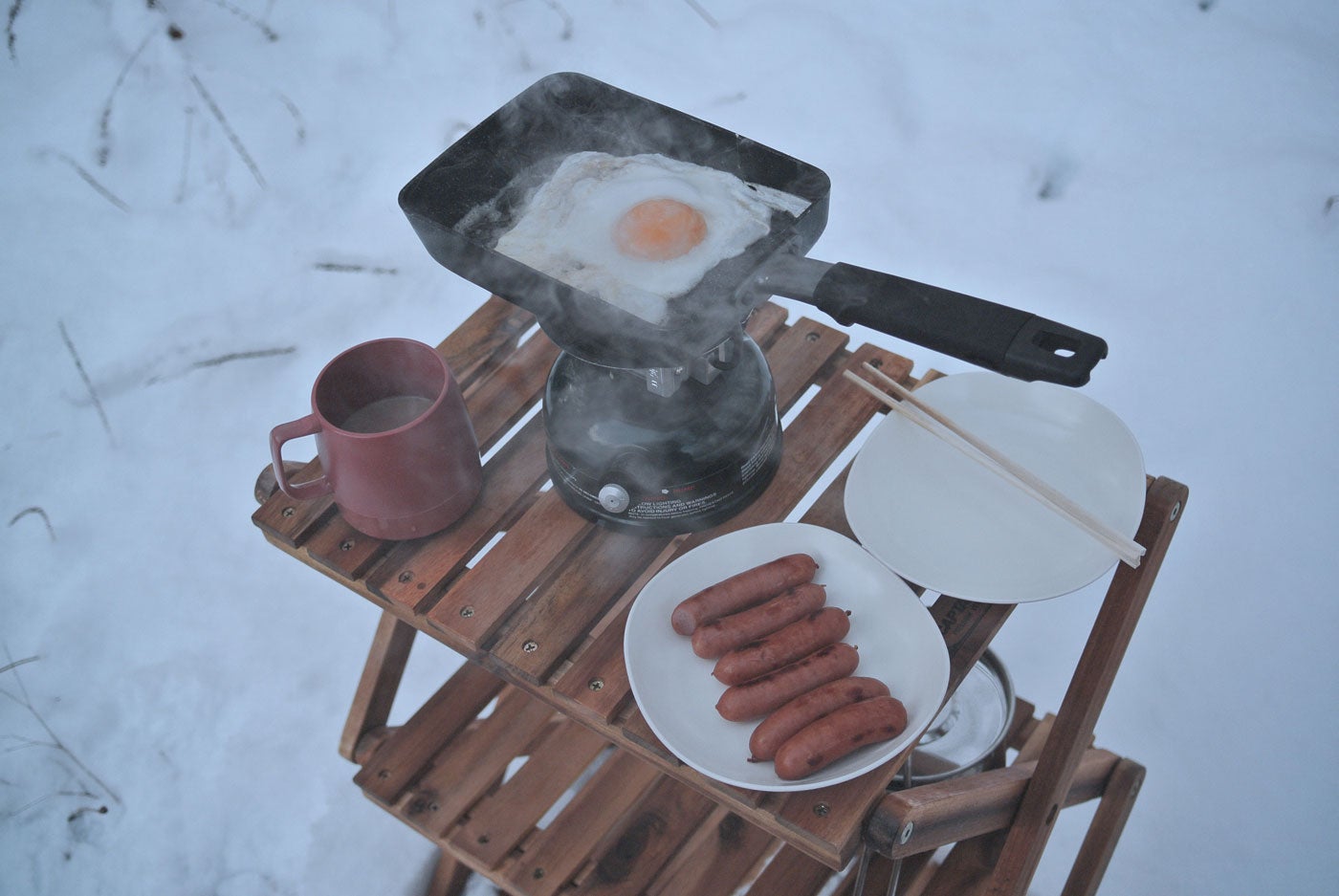
“Winter Camping.” by MIKI Yoshihito is licensed under CC BY 2.0
Make sure you have enough food and drink with you. Your body uses calories just keeping itself warm in colder temperatures, which means you burn through more energy than you would doing the same activities in warmer weather.
5. Make sure your Sleeping Bag protects against freezing temperatures.
Your sleeping bag should be rated to at least 20 below F.
You can also use a lightweight cot to get you up off the cold ground. The Thermarest ultralight cot has a radiant heat underside which helps keep the warmth reflected up into your body.
Most winter four season sleeping bags are cocoon style with a “hood” that goes over your head and drawstrings to tighten it securely. You can also use a Naglene water bottle filled with hot water in the bottom of your bag to keep your feet warm.
6. Clothing. Layers are you friend.
Clothing made from cotton isn’t the best choice for winter camping expeditions. Cotton absorbs water and doesn’t dry so readily (and could freeze!) Anything wool or fleece are much better alternatives.
You’ve probably heard this a million times but layers are indeed the key to staying warm.
Wear a base layer made with a wicking material to keep the moisture away from your skin. Then, put on a middle layer of something insulating, like a good wool sweater (or two). Next, add an outer layer like a wind resistant water proof, jacket.
On your bottom half, follow the same formula. Wear a base layer of tights or long johns made from a wicking material. You can then add a layer of sweat pants, pants made from wool, or another pair of long johns. Lastly, don a good pair of rain or snow pants that protect you from the wind and elements.
Boots should be waterproof and provide good traction. Winter or mountaineering boots work best. Another trick is to put plastic bags on your feet (yes, just like the homeless do).
Keep clothes in the bottom of your sleeping bag at night to keep them warm and avoid having to put on cold clothing in the morning.
Local Adirondack winter camping instruction resources
The ADK Winter Mountaineering Handbook, published by the Adirondack Mountain Club is full of instructions and tips for winter camping and hiking.
Every January at the Adirondack Loj outside Lake Placid, the club holds the ADK Winterfest. There are ski clinics, as well as outdoor skills workshops.
The club also has a Winter Mountaineering School.
Here, students are paired with local guides on a winter day hike, a weekend overnight, and a week-long trip that includes a 4,000 foot ascent.
Camping in the Adirondacks in Winter

“Winter Camping” by martinbednar33 is licensed under CC BY-NC 3.0
Camping in the Adirondacks in winter can be a peaceful, beautiful, and rejuvenating experience. There are some rules to keep in mind, though (no matter what season it is).
First, groups of more than ten people or stays longer than three nights require a camping permit. From December 15th through April 30th, it’s illegal to camp above 4000 feet, unless in the case of an emergency. You also must set up camp 150 feet from any trail, road, or body of water unless specifically marked with a ‘camp here’ sign.
If you’re the kind of person who loves outdoor winter adventuring but still wants to the comfort of a bed and a home-cooked meal, the Adirondack Mountain Club maintains some backcountry cabins at John Brook Camps. They don’t have running water but they do have heat. The cabins are located in the High Peaks Wilderness Area.
There are also bunk rooms, a co-ed sleep loft, and private rooms available for rent at the Heart Lake lodge
Lean-tos
Lean-tos, scattered throughout the Adirondack Mountains, make excellent camping accommodations in the Adirondacks in winter.
Originally shelters added to an existing building, lean-tos got their name from the fact that it’s rafters leaned against another wall. Lean-tos in the Adirondacks and other hiking trails across the country are simple structures. They usually have three walls, a roof, and often a floor. They’re great places to camp in the winter as the walls provide shelter from the wind and other elements.
Lean-tos are pretty much always a first-come, first-served, kind of thing. Seven to eight people can usually sleep comfortably in a lean-to and you must share with those who come after you until they’re at full capacity. This is another great reason for winter camping: you’ll likely have a lean-to to yourself.
Other lean-to etiquette rules are: you can’t close off the front with plastic, not can use nails are any other permanent fastener to attach a tarp. You may use rope to tie a canvas or nylon tarp across the front opening but you can’t pitch your tent inside one.
Adirondacks lean-tos can be found at the following locations (among others). Andy Arthur, a devoted Adirondack adventurer compiled a map of all the lean-tos in the Adirondacks (and the Catskills).
Marcy Dam/Avalanche Pass
There are four lean-tos near the trails for Mount Marcy, Mount Colden, and Avalanche Pass.
You can sleep in one of four lean-tos, or set up a tent at one of the other marked sites. – The Dyrt camper Eric K.
camp hereCranberry Lake
Cranberry Lake is the third largest lake in the Adirondack region. During winter, many of its hiking trails transform into snowmobile and cross-country skiing paths. The lean-tos are located in the public campground area east of Cranberry Lake village.
camp hereLong Lake and Raquette Lake
There are numerous lean-tos along the eastern shore of Long Lake off the Northville-Lake Placid Trail, as well as on the shores of Raquette Lake.
Some specific locations are Kelly Point (2 sites), Rodeny Point (2 sites), and Plumey’s Point (2 sites).
Copperas Pond

photo by The Dyrt camper Isabel D.
Located within the Sentinal Range Wilderness Area, the lean-to next to Copperas Pond is at the top of a steep and rocky (though short) trail. About a mile from the parking area, the trail splits in two; one way continues a circle around the pond and the other way leads to the campsite.
The lake was gorgeous, and the lean-to has a beautiful view from inside. – The Dyrt camper Isabel D.
camp hereAdirondack Loj Wilderness Campground
The Adirondack Loj Wilderness Campground has 16 lean-tos, many of which are right on the lake. Each lean-to has a fire pit and picnic table. In winter, campers can use the facilities in the High Peaks Information Center.
Lean to camping at it’s best! The lean to I had was right on the lake and on the edge of the campground. – The Dyrt camper cj J.
camp hereJohn Brook Valley
The Adirondack Mountain club maintains both the John Brook Valley property and the Adirondack Loj Wilderness Campground. Lean-tos at both properties can be reserved online, and make camping in the Adirondacks in winter much more bearable.
Lean-tos are life. Hammocks or sleeping on the floor, they’re very well protected from the wind. If the weather were more cooperative, we would have setup a tent and utilized the lean-to as “storage” but it all worked out. – The Dyrt camper Tom C.
Siamese Ponds Wilderness
Located in Warren County, the 114,010 acre Siamese Ponds Wilderness is one of the largest wilderness areas in the Adirondacks.
The area has backcountry campsites as well as lean-tos. The John Pond lean-to can be reached from the John Pond trailhead.
Puffer Pond has two lean-tos. They can be accessed from the John Pond trailhead via the John Pond, John Pond Crossover and West Puffer Pond Trails or the Kings Flow trailhead via the West Puffer Pond Trail and Old Clearing Farm trailhead via the East Branch Trail and East Puffer Pond Trail. The Kings Flow trailhead is on private land and campers must pay a fee to park there.
There is also a lean-to on the shore of Hour Pond. To reach this site, follow the Thirteenth Lake trailhead via the Peaked Mountain Trail, the Thirteenth Lake-Hour Pond Connector Trail and the Hour Pond Trail. If you’re coming from the Old Farm Clearing trailhead, use the East Branch Trail, East Puffer Pond Trail, and Hour Pond Trail. The New York Department of Environmental Conservation has a complete list of backcountry campsites in the Siamese Ponds Wilderness.
Related Campgrounds:
- Hearthstone Campground, Lake George, NY
- Old Forge Camping NY, Old Forge, NY
- Golden Beach Campground, Raquette Lake, NY
- Turning Stone Campground, Oneida, NY
Popular Articles:
Articles on The Dyrt Magazine may contain links to affiliate websites. The Dyrt receives an affiliate commission for any purchases made by using such links at no additional cost to you the consumer.

